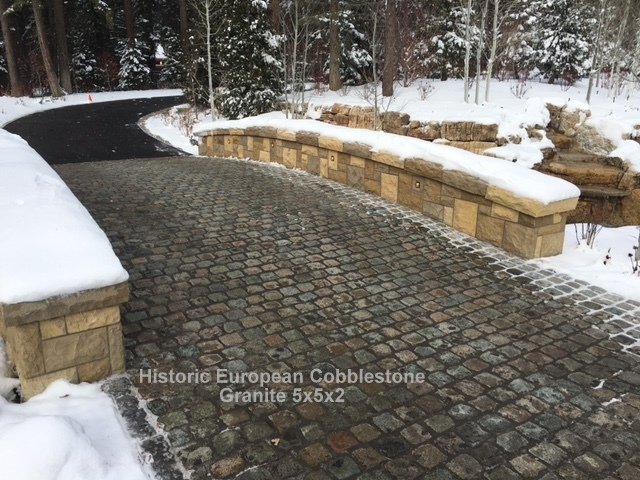Removing snow from a cobblestone driveway or walkway is managed best with these helpful tips!
If you are the proud owner of a natural, authentic (whether newly fabricated or reclaimed/antique) cobblestone paver driveway or walkway, here are a few tips we’ve gathered to help you manage snow removal during the winter.
First, to be prepared before winter by placing tall 4′ stakes – either plastic or metal with reflectors, along the boundaries of your driveway and edging. This will help guide either yourself or the hired removal service to stay on track.
Next, prepare to remove snow quickly and often. If you do it as soon as it snows, it shouldn’t pile up and can be removed more easily. And also avoid driving or walking on the snow before you get started. Packed snow is harder to clear.
Use a shovel or plow with a poly or rubber cutting edge. The poly or rubber style will slide over the cobblestone more easily and isn’t as likely to grab at the edges.
Notify your snow plow contractor about your cobblestones and have him (or her) raise the blade 1″ before entering the driveway. Experienced operators realize that reflectors indicate a cobblestone area and with the raised plow, will avoid uplifting individual cobbles. Experienced operators should also be knowledgeable about the proper approach to snow removal on a cobblestone driveway. Assuming your cobblestones are installed on a natural base – not mortared in place, one benefit is, if one or more of the stones get dislodged, you simply need to put them back and tamp them down. In the spring you can evaluate and adjust again to create a level surface if necessary.
If your cobblestone driveway is mortared in place, your approach to removal is the same, being careful not to catch the edge of the cobbles. They should not pop off as long as they were installed correctly.
For the ultimate in snow management for driveways and walkways, and if you’re in the design/ planning stages for your front entry, consider a radiant snow melting system when installing hardscape material. Learn more about radiant heating systems by clicking here.

